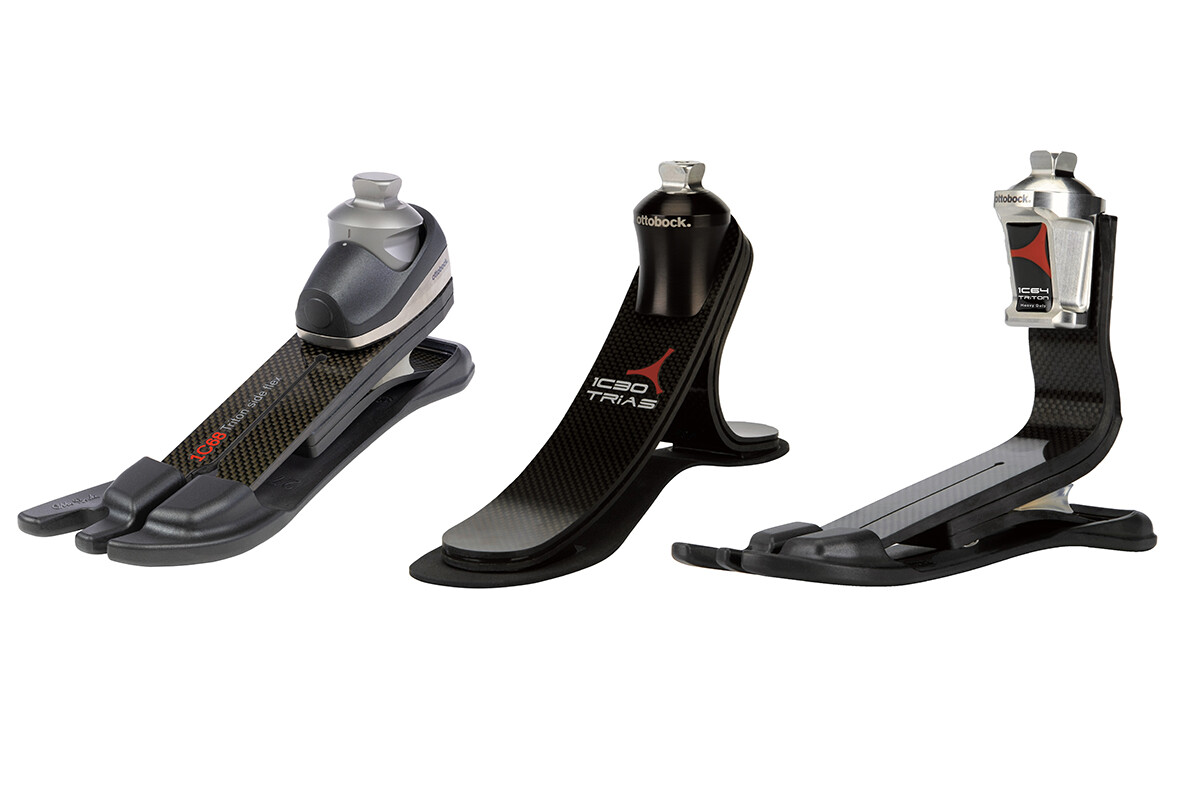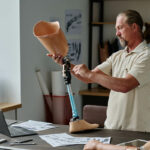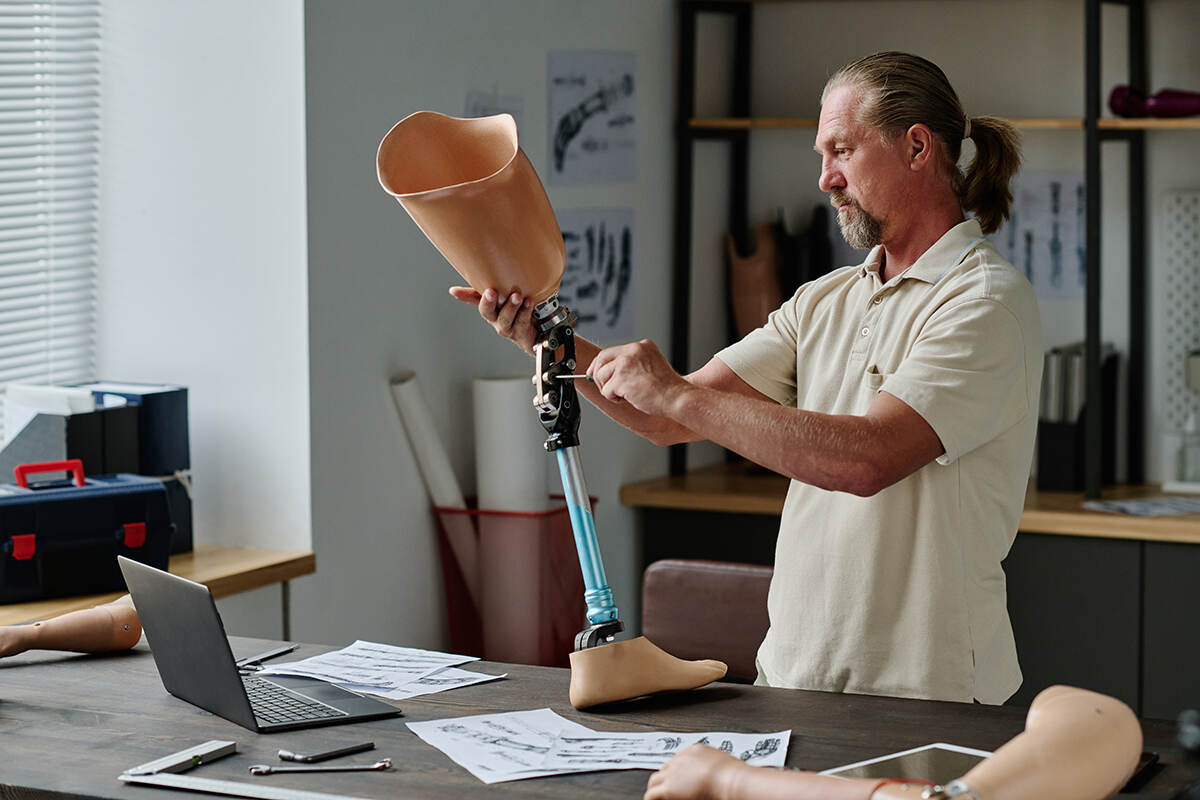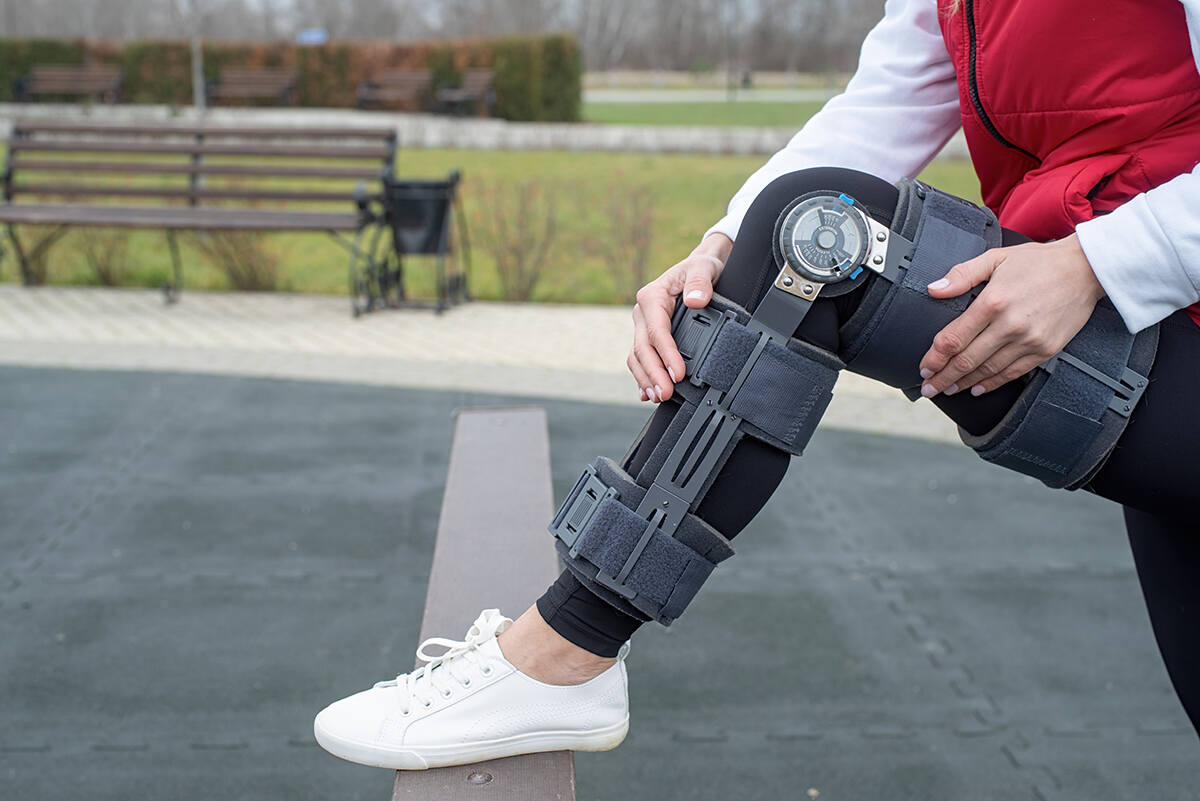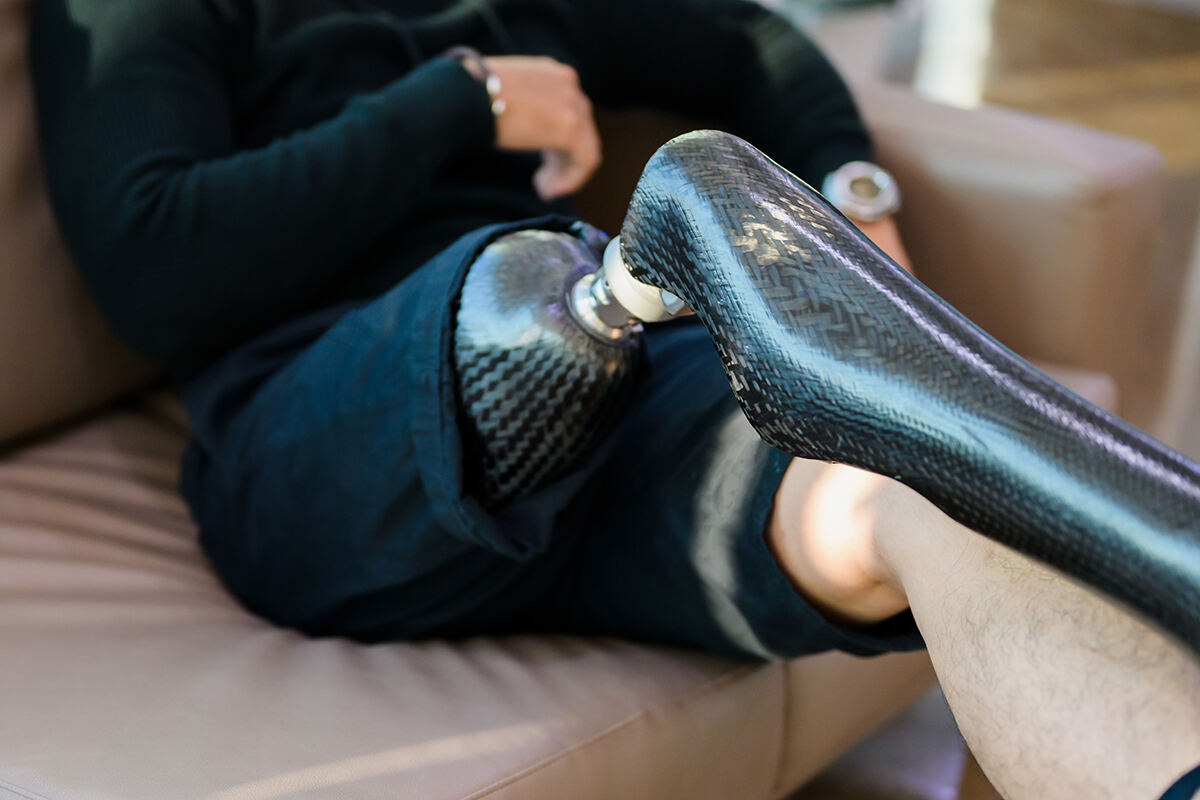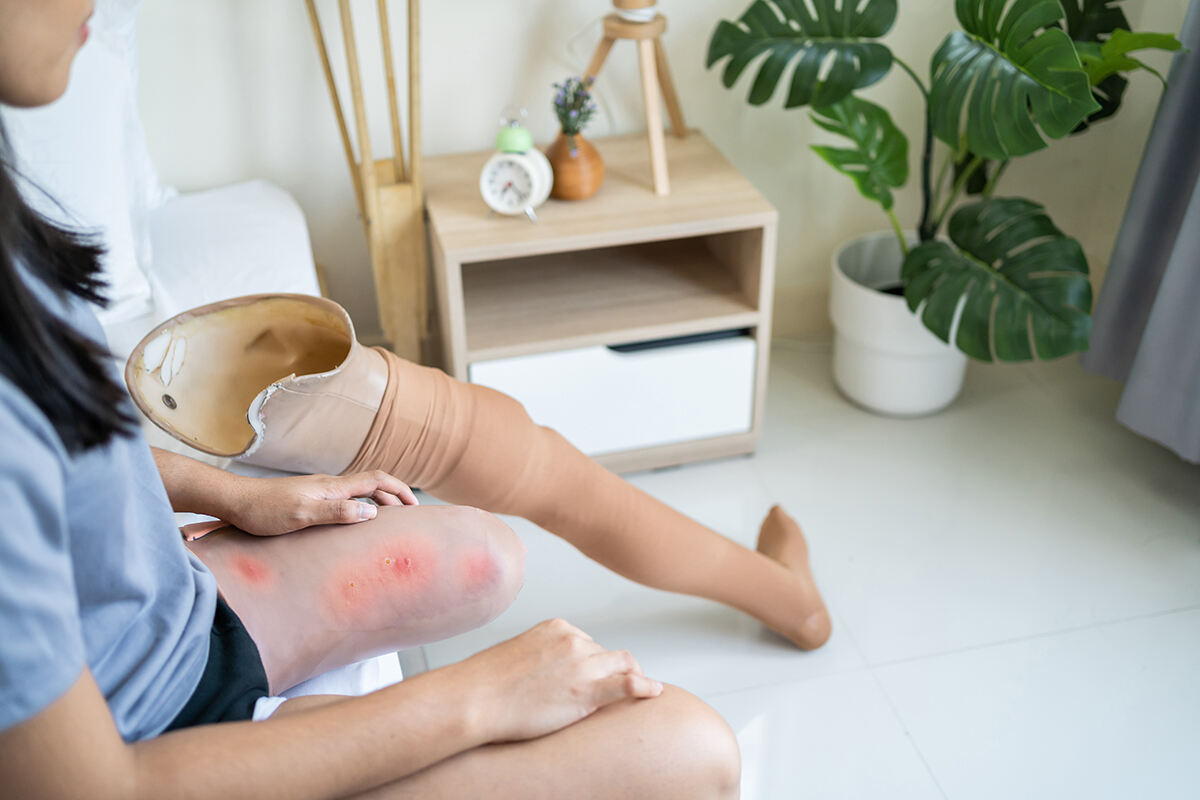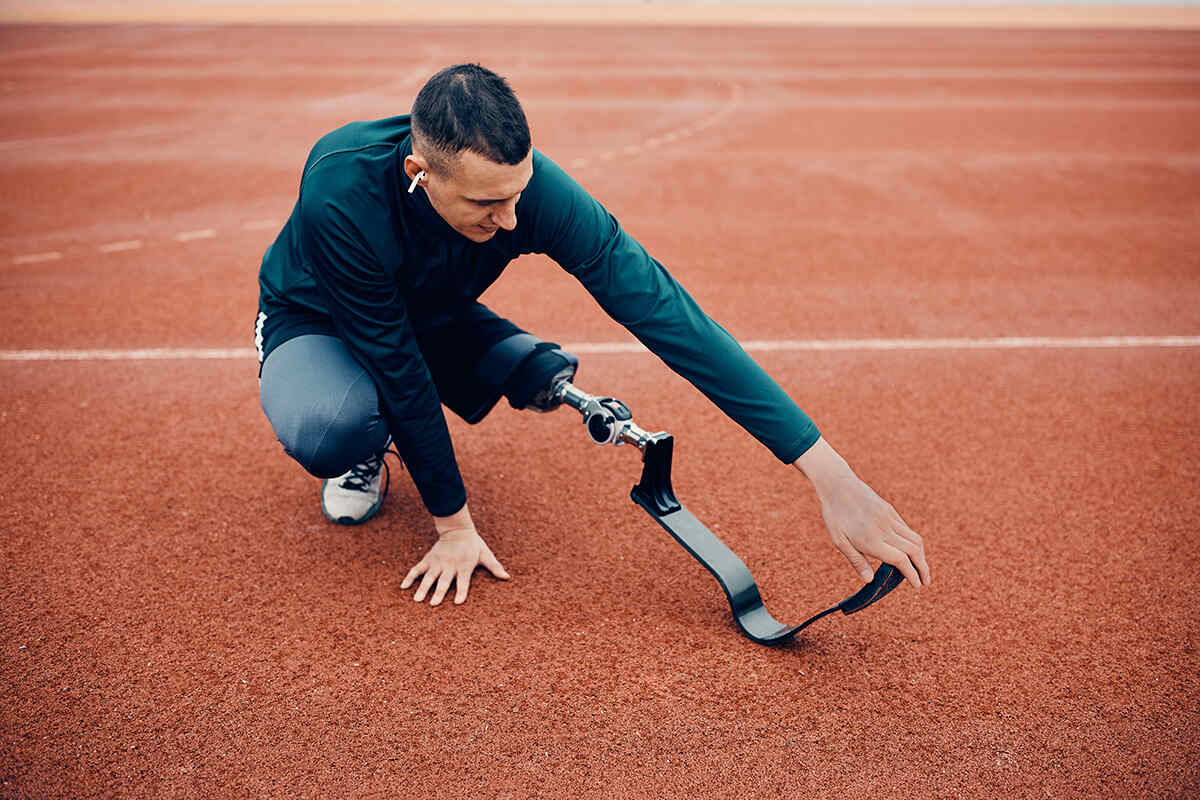Choosing a prosthetic foot is a decision that hinges on personal mobility goals, the specifics of amputation, and daily lifestyle requirements. To aid in your selection, this article presents an array of prosthetic feet types, each designed for different demands and activities. Without delving into technicalities, we’ll guide you towards identifying the prosthetic foot that not only fits your physical condition but also supports your active life.
Key Takeaways
- The selection of a prosthetic foot depends on several factors including the level of amputation, activity level, and personal considerations such as age, weight, and lifestyle.
- Prosthetic feet vary from basic designs like SACH and Elastic Keel feet for low activity levels to advanced options like Single-Axis, Multi-Axis, and Dynamic Response feet catering to more active individuals.
- Technological advancements have led to the development of Microprocessor and Powered feet that provide greater mobility and personalization, while regular care and maintenance are crucial for the longevity of any prosthetic foot.
Understanding Prosthetic Feet: Factors to Consider
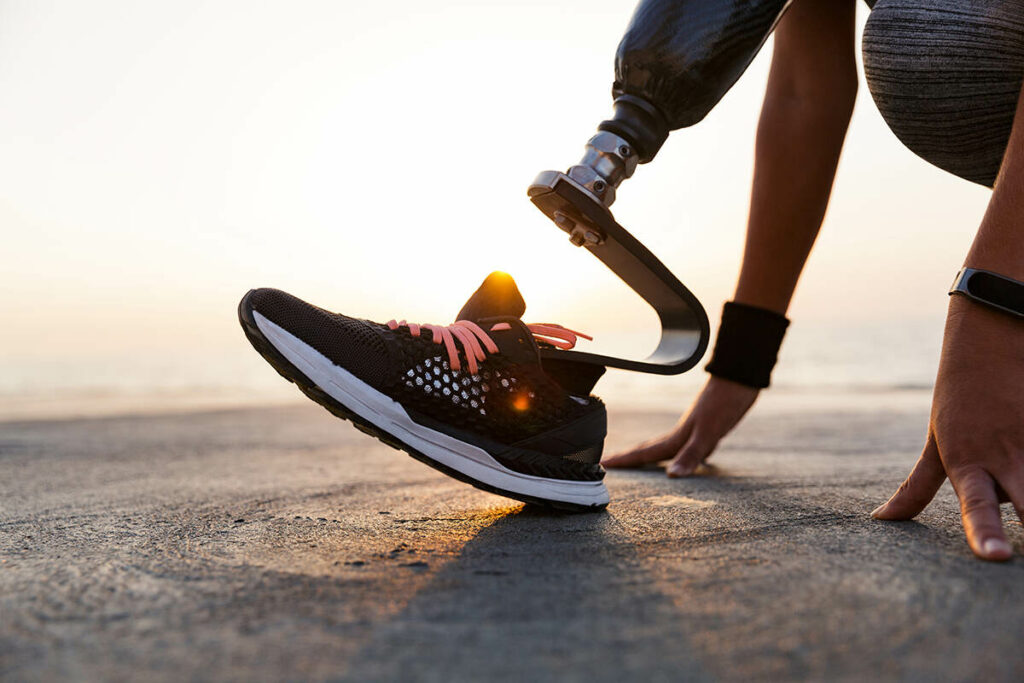
Prosthetic feet are more than just a functional replacement for a lost human foot. They are a key to unlocking new potentials, reaching new heights, and conquering new challenges. But the journey to find the right prosthetic foot isn’t a one-size-fits-all situation. It’s a deeply personal journey shaped by various factors, including the consideration of other prosthetic feet options.
The level of amputation, your activity level, and personal factors such as age, weight, and lifestyle all play a crucial role in determining the ideal prosthetic foot for you. A thorough comprehension of these factors empowers you to make a decision that aligns with your unique needs and goals.
Amputation Level
The level of amputation is a significant factor that directly influences the type of prosthetic foot that would best serve your needs. The suitability of various prosthetic foot options hinges on the level of amputation, which could be partial, below-knee, or above-knee.
For instance, the diversity of partial foot amputations alone necessitates a range of prosthetic solutions. Whether it’s the toes, the great toe, or something more substantial, the prosthetic foot has to ensure optimal mobility and stability for both the individual’s limb and their overall comfort. Similarly, below-knee and above-knee amputations require prosthetic feet that provide a secure and user-friendly experience, from shock-absorbing feet to motor-powered foot prosthetics.
Activity Level
How active are you? Do you enjoy a morning jog or prefer a leisurely stroll in the park? Your response to these questions greatly influences the decision-making process for the right prosthetic foot. Different activity levels demand different functionalities and mobility from the prosthetic feet.
Two categories of articulated prosthetic feet – Single-Axis and Multi-Axis – offer distinct functionalities for different activity levels. While the Single-Axis foot improves knee stability through controlled ankle flexion, the Multi-Axis foot enhances mobility on uneven surfaces.
Personal Factors
Selection of a prosthetic foot is more than just a medical decision – it’s a lifestyle choice. Personal factors such as age, weight, and lifestyle significantly influence the selection of a prosthetic foot. These factors help determine the level of durability and functionality required for your daily activities and overall quality of life.
In the process of selecting a prosthetic foot, it is important to consider personal factors such as:
- Activity level
- Personal needs
- Living situation
- Goals
These elements are vital in confirming that the selected prosthetic foot complements and functions well in your unique circumstances.
Basic Prosthetic Feet: SACH and Elastic Keel
As we delve into the realm of prosthetic feet, we encounter a multitude of options. We’ll begin by examining two fundamental but efficient prosthetic feet – the SACH and Elastic Keel feet. These are designed to offer reliable support and mobility for light activity levels, making them a popular choice for initial prostheses or low-activity users.
SACH Foot
The SACH (Solid Ankle Cushion Heel) foot is a simple yet effective prosthetic foot option. A perfect blend of simplicity and functionality, the SACH foot offers a rigid structure that does not have ankle articulation, integrating a soft rubber heel wedge to absorb shock and a design element that imitates forefoot flexion, making it a solid ankle cushioned heel prosthetic solution.
Ideal for individuals with lower activity levels, the SACH foot provides stable support during mid-stance, striking a balance between mobility and stability. Moreover, it offers numerous advantages such as waterproofing, cost-effectiveness, and durability, making it a popular choice among individuals who prioritize stability and durability over high activity.
Elastic Keel Foot
The Elastic Keel foot takes a step beyond the SACH foot, offering improved flexibility and adaptability. This foot provides better ground contact and stability during walking, enhancing its functionality for individuals with medium to high activity levels.
While the Elastic Keel foot shares some similarities with the SACH foot, it also offers some ability to adapt to uneven surfaces, enhancing stability and comfort. Nevertheless, while it provides superior functionality, it also carries a heavier weight and higher cost compared to SACH feet.
Advanced Prosthetic Feet: Single-Axis, Multi-Axis, and Dynamic Response
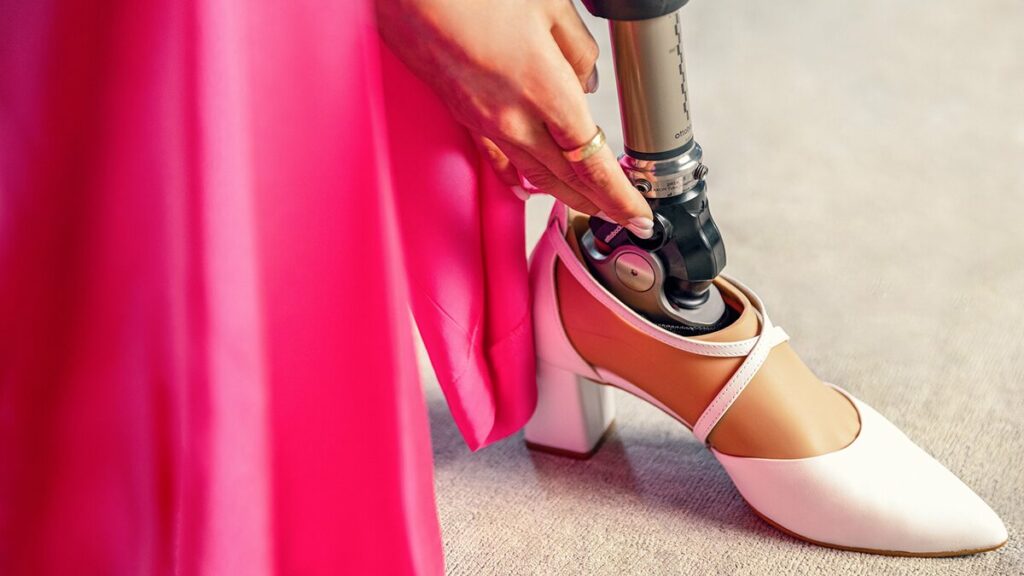
Progressing further, we come across sophisticated prosthetic feet designed to accommodate users with more active lifestyles and demanding routines. These include Single-Axis, Multi-Axis, and Dynamic Response feet. Each of these options offers unique features that improve mobility and comfort, making them a preferred choice for active individuals.
Single-Axis Foot
The Single-Axis foot brings advanced functionality to the plate, offering up and down mobility. Designed with an ankle joint that enables upward and downward motion, this prosthetic foot enhances knee stability and offers controlled ankle flexion, making it an ideal choice for individuals with knee or hip complications.
Made with durable, lightweight composites, the Single-Axis foot showcases an innovative design that ensures a balance between strength and weight. This feature, along with its ability to enhance knee stability, makes it a popular choice among individuals with above-knee amputations.
Multi-Axis Foot
The Multi-Axis foot features:
- Ability to navigate irregular surfaces
- Facilitate lateral movement
- Dynamic response and multi-axial systems
These qualities enhance the overall stability and comfort of the Multi-Axis foot, making it an excellent choice for individuals who require improved mobility for their daily activities. The enhanced stability and propulsion make the Multi-Axis foot an ideal choice for those being in varied terrain.
Multi-axis feet is usually only available for K1 and K2 users.
Dynamic Response Foot
The Dynamic Response foot is a game-changer in the world of prosthetics. It offers the following benefits:
- Designed to store and release energy during each step
- Offers a more organic and seamless walking pattern
- Reduces energy usage
- Enhances walking functionality
The dynamic response foot, also known as a responsive foot, is ideal for those who necessitate the ability to vary walking speed, the capacity to change directions rapidly, or the capability to walk extended distances. By providing a more natural range of motion, it enhances walking efficiency and promotes a more active lifestyle.
Technologically Advanced Prosthetic Feet: Microprocessor and Powered Feet

Microprocessor and Powered feet stand out as some of the most groundbreaking options in prosthetic feet. These state-of-the-art devices utilize sensors, algorithms, and battery power to provide improved mobility and balance, transforming the way users navigate their world.
Microprocessor Feet
Microprocessor feet represent the cutting edge of prosthetic technology. These advanced devices use built-in ankle angle sensors and microprocessors to adapt ankle position and resistance according to walking speed, terrain, and incline, enhancing stability and comfort.
Microprocessor feet offer substantial advantages over basic feet, such as:
- Enhanced biomechanical performance when navigating ramps and stairs
- Greater toe clearance during the swing phase of walking
- Decreased peak pressures on the remaining limb
- Improved comfort while traversing different speeds, terrains, and inclines.
Powered Feet
Powered feet take prosthetic technology to new heights. Operating with battery power, these feet replicate the muscle action of the foot and ankle, resulting in active propulsion that enhances walking capabilities.
While powered feet offer significant benefits such as improved walking abilities and immediate propulsion, they also come with their own set of challenges. Among them are increased weight, the need for more frequent maintenance, and shorter battery life, requiring daily charging to maintain functionality, and one of the major downside is the high price.
Specialty Prosthetic Feet: Partial Foot and Custom Solutions
In the realm of prosthetics, there isn’t a universal fit. Hence, specialty prosthetic feet options like Partial Foot prosthetics and Custom Solutions are designed to address specific needs and preferences, providing tailored functionality and appearance.
Partial Foot Prosthetics
Partial foot prosthetics provide a solution for individuals who have undergone partial foot amputations. These prosthetics are designed to replace only the portion of the foot that has been amputated, enhancing stability and improving shoe fit.
By restoring the appearance of the missing portion of the foot, partial foot prosthetics also enhance the overall aesthetic of the individual, contributing to a more natural look. Moreover, they are crafted from materials possessing suitable tensile strength, density, and durability, ensuring proper shoe fit and optimal functionality.
Custom Solutions
In the realm of prosthetics, customization is key. Custom Solutions cater to unique needs and preferences, providing tailored functionality and appearance. Whether it’s for high-impact sports activities, water activities, or simply catering to specific cosmetic preferences, custom solutions offer a personalized approach to prosthetics.
Custom solutions for prosthetic feet take into account individual needs and objectives. They are crafted from a range of materials, such as:
- Acrylic resin
- Carbon fiber
- Thermoplastics
- Silicone
- Aluminum
- Titanium
Caring for Your Prosthetic Foot
Selecting the appropriate prosthetic foot merely marks the beginning of your journey. To ensure the longevity and optimal performance of your prosthetic foot, proper care and maintenance are essential.
Maintaining cleanliness is an integral component of caring for your prosthetic foot. It is advisable to clean your prosthetic foot using mild soap and water. Regular cleaning helps maintain hygiene and functionality. In addition to cleaning, regular inspection is also necessary. Be vigilant for new pain, discomfort, instability, visible cracks or warping of the prosthetic materials, and any irregularities.
Lastly, remember to arrange professional evaluations of your prosthetic foot. Regular professional inspections, ideally every six months, can help maintain proper functioning of the prosthetic foot and mitigate potential issues. Remember, your prosthetic foot is an investment in your mobility and independence, and taking care of it ensures it serves you well.
To be noted, you should always advise with your prothetist before choosing feet. Working closely with a professional is crucial to achieve a perfect match.
Summary
In this journey through the world of prosthetic feet, we’ve explored a range of options, from basic to advanced, and from standard to custom-made. Each of these options offers unique features and advantages, catering to a wide range of needs and lifestyles. Choosing the right prosthetic foot is a deeply personal decision, influenced by factors such as the level of amputation, activity level, and personal factors. By understanding these factors and the different prosthetic foot options available, you can make an informed decision that best suits your needs and enables you to live a fulfilling life.
Frequently Asked Questions
What are the different types of prosthetic feet?
There are different types of prosthetic feet, including hydraulic ankle feet, microprocessor feet, powered feet, dynamic response feet, axial feet, solid ankle cushion heel (SACH), and partial feet and toes. Each type serves different functions and is designed to meet specific needs.
What are the four types of prosthetics?
The four types of prosthetics are transradial, transhumeral, transtibial, and transfemoral. Each type serves a different function depending on the missing body part.
How much is a prosthetic foot?
A prosthesis can cost anywhere between $1000 and $100,000, depending on the extent of the prosthetic. Be sure to check with your insurance company before making any decisions on feet.
What is the most common prosthetic foot?
The most common prosthetic foot is the SACH foot, which is basic, low-cost, and includes a solid ankle and rigid keel. Consider this option for a simple and affordable prosthetic foot.


